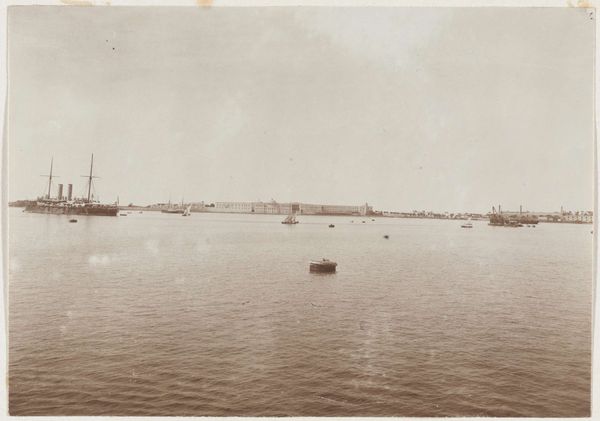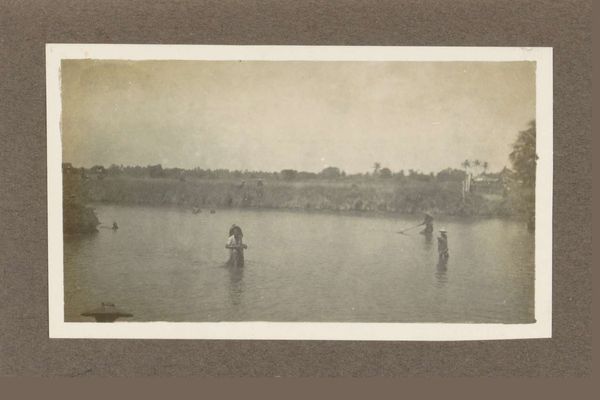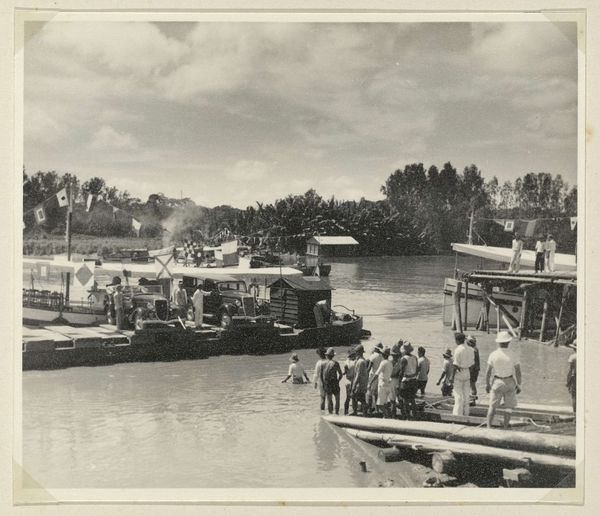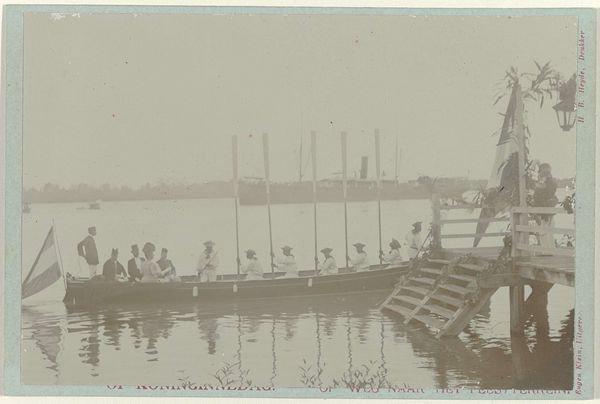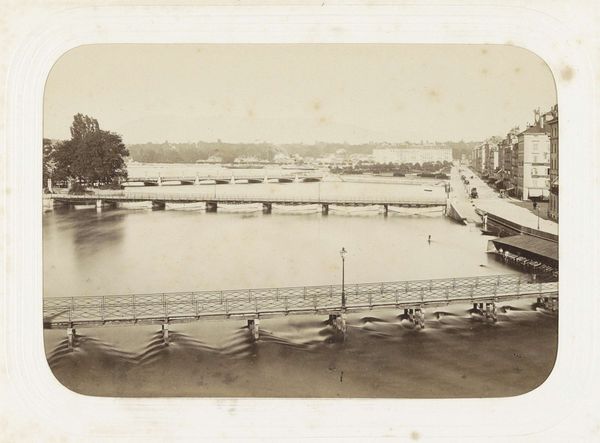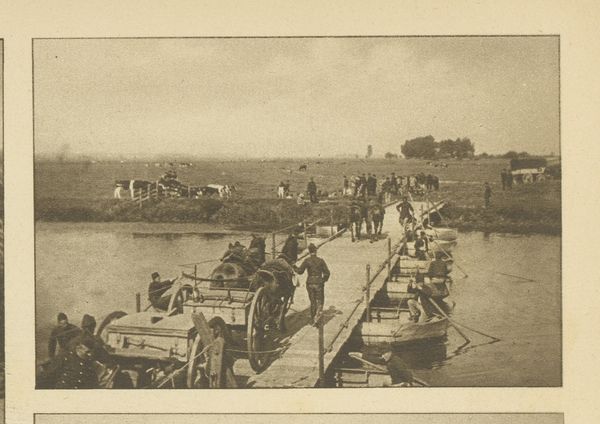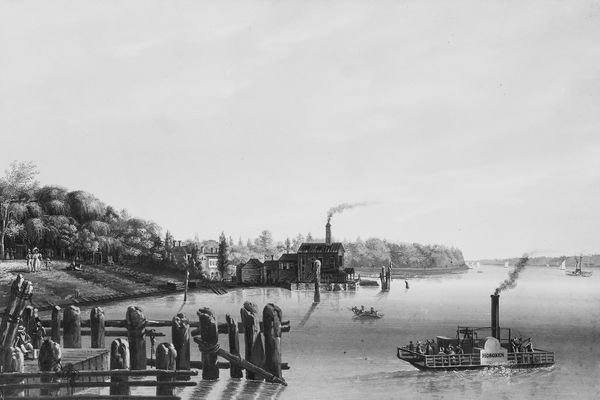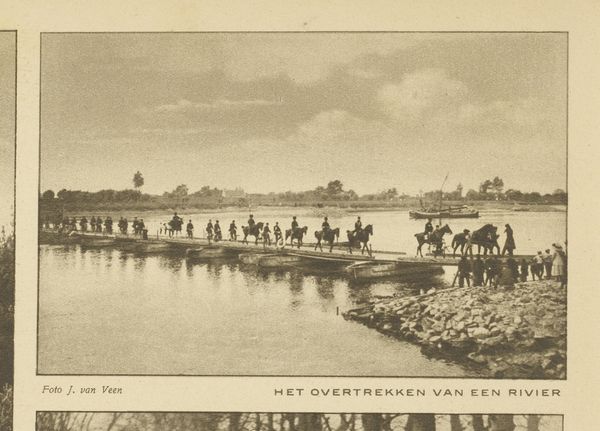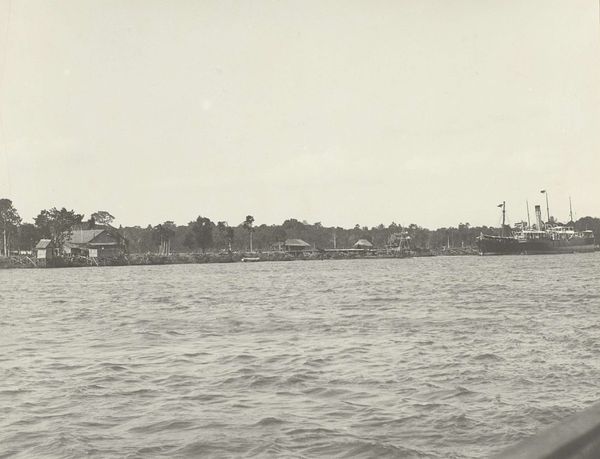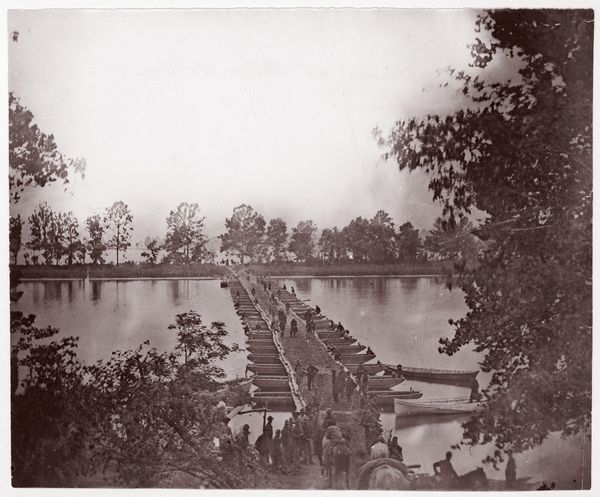
photography, gelatin-silver-print
#
boat
#
war
#
landscape
#
river
#
photography
#
gelatin-silver-print
#
monochrome photography
#
realism
#
monochrome
Copyright: Public Domain
Curator: Looking at this gelatin silver print, I’m immediately struck by the sheer number of figures clustered on the makeshift pontoon bridge. It evokes a palpable sense of activity. Editor: Indeed. We’re looking at "Port Royal, Rappahannock River" captured by Andrew Joseph Russell, likely taken sometime between 1861 and 1865 during the American Civil War. Now in the collection of the Metropolitan Museum of Art, this photograph provides a valuable glimpse into the war's logistical infrastructure. Curator: The materiality of the photograph itself – that smooth surface – contrasts so sharply with the rough labor it depicts. Imagine the workers constructing that pontoon bridge. What timber did they use? Was it sourced locally or transported from elsewhere? That effort feels absent as one contemplates the polished final result, which almost certainly ended up circulating as war propaganda. Editor: Absolutely, it played a key role in shaping public perception. The image presents a vision of Union progress, ingenuity, and control. However, beyond that surface-level read, we might ask: who exactly are we seeing in this photograph, crossing that precarious bridge? Are they soldiers? Civilians? Enslaved people compelled to work for the Union army? Their identities and experiences are obscured. Curator: Precisely. And the boats are essential too, both for what they carry – probably vital supplies, ammunition, maybe even displaced individuals – and for the industrial labor they embody. Notice the smokestacks on one of them: these weren’t quaint paddle-wheelers for pleasure cruises; they signify the mobilization of manufacturing. Editor: The placement within the historical narrative is also vital. Remember, photography during the Civil War served many roles: documentation, memorialization, but most critically, information management and even psychological warfare. The Union needed to showcase its technological capabilities to demoralize the Confederacy. Curator: Yet the realism so embraced, evident in every imperfection and gritty texture, presents complexities and nuances beyond propaganda. Consider, what of the social contexts excluded: the suffering and hardship experienced, labor injustices and, for many of those visible, life in refugee camps? The stark contrast of beauty and truth begs us to ask; how much agency over their own lives did any of the figures depicted possess, ultimately? Editor: And it reminds us that photographs, especially those disseminated through powerful institutions, are always carefully constructed arguments as much as documentary evidence. "Port Royal, Rappahannock River" certainly isn’t an exception, its message of progress intentionally highlighting strength in industry at a crucial juncture. Curator: I appreciate how reflecting on material circumstances enables such deeper contemplation of its societal impacts and purposes. Editor: Understanding the image through its time gives context to the photographer's point of view and the era.
Comments
No comments
Be the first to comment and join the conversation on the ultimate creative platform.


